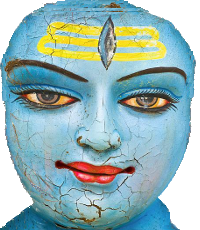India as an international system
India, we said, is not a country as much as an international system in its own right. It contains a vast number of ethnic groups, almost as many languages, and separate religions that count millions of adherents. There has always been great political diversity too with many independent states competing with each other. During some periods one state managed to conquer much, or most, of the subcontinent. This is what the Maurya did, the Guptas, and later the Mughals. Yet they all had to make allowances for the diversity of cultures and ethnic groups. And even the most powerful rulers had little power over what was going on in India’s hundreds of thousands of villages. The diversity and political fragmentation become even more obvious if we include Southeast Asia in the Indian international system. Southeast Asian societies were really quite different from India and Indian rulers never made any attempts to control them. At the same time, the Indian international system was held together by shared practices and beliefs. This has often been identified as a “Hindu” legacy, but Hinduism itself is an ongoing interaction between diverse traditions rather than a set of fixed practices and beliefs. This has made Hinduism into a rather indistinct religion but it has also made it highly persuasive. It has been easy to mix Hinduism with other traditions. Thus Buddhists could form a new religion without quite breaking with the old and Islam could make converts among people who maintained much of their traditional ways of life. This explains India’s strong influence on Southeast Asia and it explains its influence in the world at large today.
Today many Indian nationalists take a different view of Hinduism. Indian nationalism was formed at the end of the nineteenth century as a movement to oust the British occupiers.[Read more: “G.K. Chesterton on Indian nationalism”] For this to be possible, Indian nationalists claimed, the country had to be united. Yet unity, some of them continued, could never be achieved in a society as diverse as India. These nationalists envisioned a far simpler world — a society only for and by Hindus. And Hinduism, moreover, should be strictly defined, not as an ongoing interaction between diverse traditions but in terms of a definite set of practices and beliefs. This notion is often referred to as Hindutva. Not surprisingly, nationalists of a Hindutva persuasion have their own interpretation of Indian history. Other cultures and religions are regarded as foreign impositions and times when they were prominent were periods of division and weakness. This includes a ruler such as Ashoka the Great whom Indian nationalists dislike since he converted to Buddhism and rejected the caste system.
Much the same is true of the Hindutva view of the Sultanate of Delhi and the Mughal Empire. The Mughals, Hindu nationalists explain, were invaders who ruined the country and imposed a foreign religion on its people. The divisions created in this way made the country an easy prey for European colonizers. Instead, it is the Gupta period which is identified as the age of Indian greatness. During the Gupta Empire the country developed economically, it was politically centralized, and Hinduism was officially promoted. There are still Hindutva nationalists in India today. Indeed, the country is run by them. And history textbooks continue to be rewritten in order to make India less pluralistic and Hinduism into a less forgiving faith. The Hindutva vision for the future is of a new Gupta Empire — one nation united under one set of Hindu gods. Yet Hinduism was never a culture as much as a civilization. It never built walls or sought to define itself in distinction to other traditions. Instead, Indian society reached out to others, engaged them in trade and exchange, both along the caravan routes of Central Asia and between the ports in the Indian Ocean. Indian society was always open to the world and the world was always open to Indian civilization. This is how India grew rich and admired.


